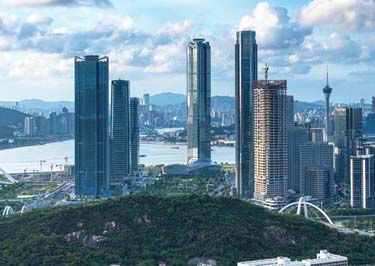Bao Jun (Pao Chün)
Prestigious Lingnan photographer & poet
1.
Bao Jun, whose name is styled either Zongyuan or Yiqing and alias Shixisheng, was born in Zhuhai's Shanchang Village in what is now New Xiangzhou.
Bao was a renowned artist in the late Qing dynasty (1644-1911) who was well-versed in poetry, painting, and especially talented in calligraphy.
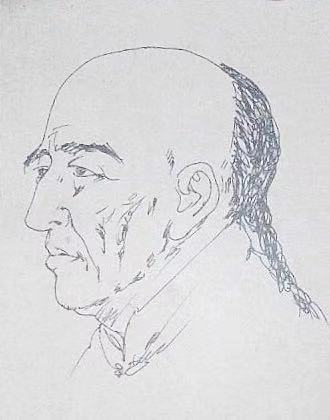
Bao Jun (Pao Chün) (1797-1851) [Photo of sketch provided by Zhuhai Calligraphers Association]
Bao turned out to be a successful candidate in the imperial examinations at the provincial level in 1822, the second reigning year of Emperor Tao-kuang (Daoguang). The following year he was awarded the second-place Presented Scholar (chin-shih) (jinshi) degree, which was highly coveted and roughly comparable to a PhD in the West. He was hence appointed to the imperial Hanlin Academy (literally "brush wood court"), which advised the emperor and helped him to draft documents, and afterwards was reassigned to serve as the chief of the Shanxi Department of the Imperial Ministry of Justice.
2.
After resigning from this post, he returned to reside in Canton (Guangzhou), and travel to and from Hsiang-shan County -- today's Zhongshan, Zhuhai, and Macao.
The Fangcao (Green Grass) Street where middle-aged Bao lived in Canton had been a deep-rooted cultural area. There Bao built a garden named Ye Yuan (Also Garden), which housed a villa, Rong Tang (Banyan House), and pond called Rong Chi (Banyan Pond) with a towering Banyan tree alongside. Bao invited friends to chant poetry and create Chinese wash paintings in the House during fine weather of spring and autumn.
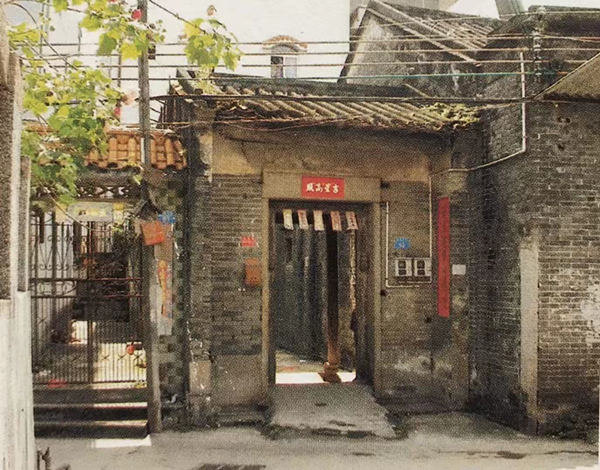
Bao's former residence in Shanchang Village [Photo provided by Liang Zhenxing]
Today, Bao's most outstanding painting works feature orchids and bamboo, which send out rich and graceful beauty, yet a great variety of his calligraphic works can be found at The Palace Museum in Beijing, Guangdong Museum, Guangzhou Art Gallery, Zhongshan Museum, Zhuhai Museum and in the hands of some private collectors.
3.
Bao constructed a park back home with two pavilions and another two studies on the side of Shixi (Stone Brook) Hill across from his residence in Shanchang Village during the 1841-45 time period. He named the park after the Lan Ting (Orchid Pavilion), a garden-style private reception venue of Wang Hsi-chih (Wang Xizhi) (c303-c361), the most celebrated of Chinese calligraphers in the Eastern Jin dynasty 1,500 years earlier.
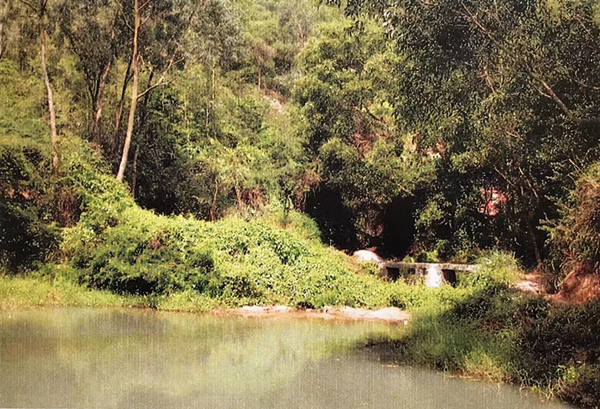
Ruins of Yi Lan Ting (After Orchid Pavilion) Park
By imitating the ancient Orchid Pavilion's elegant gatherings, he invited talented men of letters to Yi Lan Ting (After Orchid Pavilion) Park to amuse themselves with creation of calligraphy, paintings, and poetry over drinking and wager games, thus leaving behind more than 30 remarkable etchings on the hillside rocks.
Wang Hsi-chih is most famous for his calligraphy: The Lanting Xu (Preface of the Orchid Pavilion) or Lanting ji Xu. Written in elegant semi-cursive script and underpinned by deep philosophical thinking, it is among the best known and most copied pieces of calligraphy in Chinese history and also a famous piece of Chinese literature. Revered as the best-running calligraphy, it had won Wang Hsi-chih the fame of Sage of Calligraphy, or Super Master of Calligraphy.
4.
Situated north of Meihua Road and west of the Gu Yuan Museum of Art, Yi Lan Ting Park has well-preserved rock carvings -- the Chinese characters "Shixi" (Stone Brook) at the entrance of the hill and "E", goose, created by Bao Jun himself.
The park, renamed as Shixi Park years ago, opened to public in 2012 after two years of reconstruction costing more than 7 million yuan ($991,000 million).
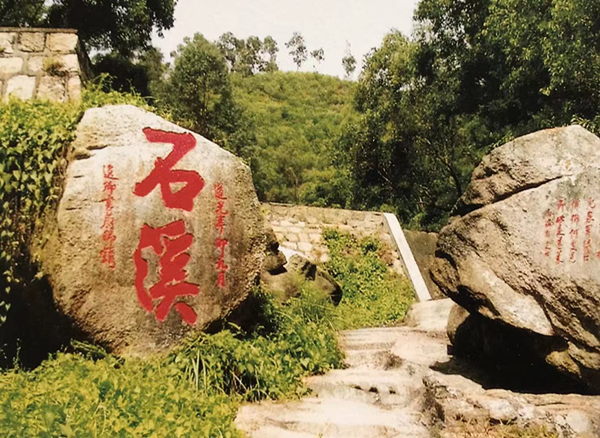
Chinese characters Shixi (Stone Brook) rock etching [Photos provided by Zhuhai Museum]
In 1851, Bao Jun was summoned by Emperor Hsien-feng (Xianfeng) to Beijing to take a post but he caught an illness halfway along the journey. He came back to Canton and died there that year at age 54.
His remains were moved back to join his wife's grave at a cemetery in his hometown of Shanchang, and then were relocated to Shixi Hill by the Zhuhai Museum in 1988.


